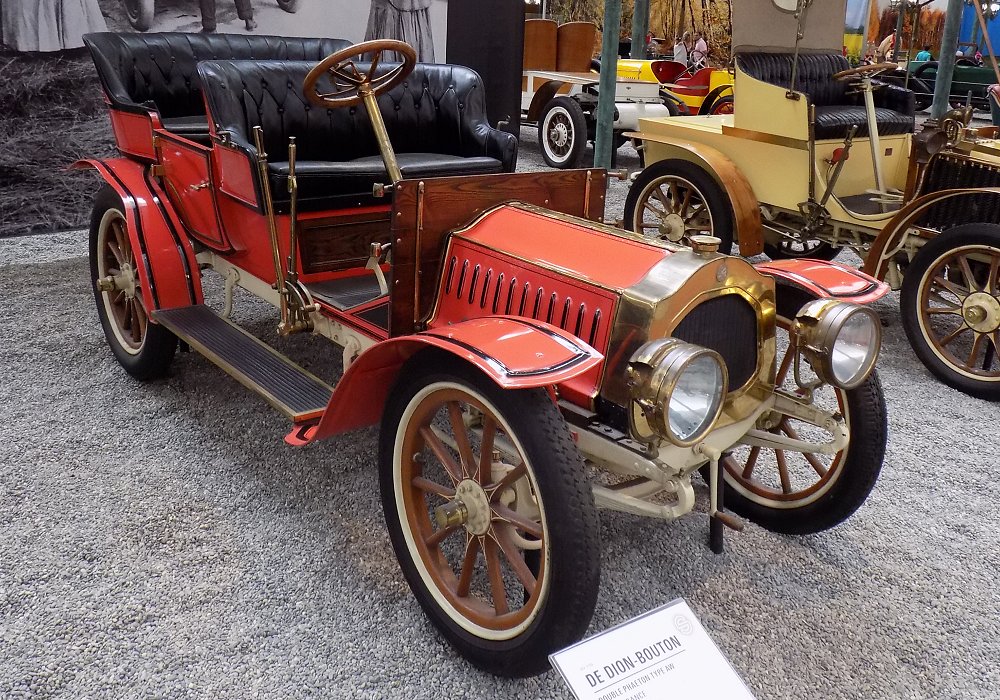Description
The De Dion-Bouton Type AW Double Phaeton was a stylish and well-engineered touring car produced during the 1910s, a time when the French automaker was shifting its focus from light, single-cylinder vehicles to more substantial, multi-cylinder motorcars. The Type AW reflected this evolution, combining mechanical refinement with spacious and elegant coachwork, making it suitable for longer journeys and the growing expectations of private automobile ownership in the years leading up to the First World War.
The Type AW was powered by a four-cylinder, front-mounted petrol engine that produced between 10 and 12 horsepower, depending on the specific configuration. This represented a considerable step forward from the earlier De Dion-Bouton single- and twin-cylinder designs, offering smoother operation, more consistent power delivery, and greater cruising capability. The engine was water-cooled and featured magneto ignition along with mechanically actuated valves, all mounted within a compact yet robust cast-iron block.
The powertrain was mated to a multi-speed gearbox, typically with three or four forward speeds, connected to a live rear axle via a shaft drive—a more advanced system than the chain drives used in earlier models. This gave the car improved mechanical efficiency and quieter operation, which was particularly appreciated in touring vehicles like the Double Phaeton.
The Double Phaeton body style was ideal for family or social travel, offering two rows of seating with a modest level of protection from the elements. The open design allowed for excellent visibility and a sense of freedom while driving, yet folding tops and side curtains were often fitted for use in poor weather. The seating arrangement allowed four to five occupants to travel comfortably, with individual or bench-style seats and a spacious rear compartment.
The chassis of the Type AW was constructed from pressed steel in a ladder frame arrangement. It supported solid front and rear axles with semi-elliptic leaf springs, which provided a balanced and stable ride across the rough and often unpaved roads of the period. Wooden artillery wheels, usually fitted with pneumatic tires, helped to improve comfort and traction. Steering was via a large steering wheel mounted to the right or left, depending on market preference, and braking was managed by a transmission brake and mechanically operated rear-wheel drums.
Visually, the Type AW was elegant and practical, with a tall, upright profile and brass fittings that included headlamps, radiator trim, and various control levers and handles. The interior featured leather upholstery and wooden dashboard trim, reflecting the luxury expectations of middle- and upper-class motorists of the time.
The De Dion-Bouton Type AW Double Phaeton stood as a symbol of the company’s maturity in the marketplace—offering more powerful and versatile vehicles that still retained the mechanical simplicity and reliability that had made the brand famous. It served well as both a family tourer and a social vehicle, embodying the shift in motoring from exclusive novelty to aspirational mainstream transport.
Today, the Type AW is a rare and prized collector’s car, representing a transitional period in motoring history when elegance, engineering, and accessibility began to merge into the automobile as we know it today.
